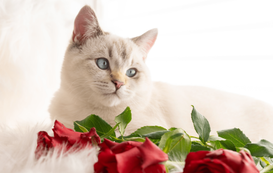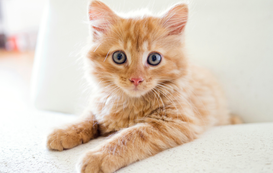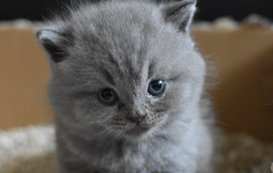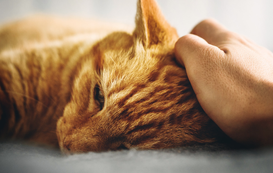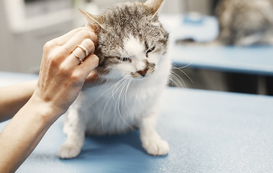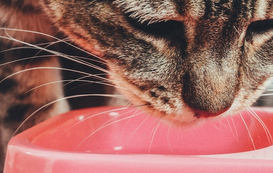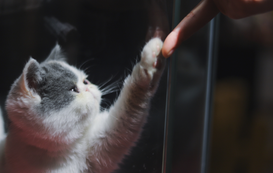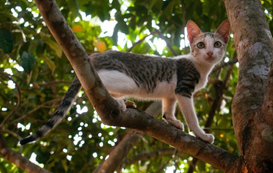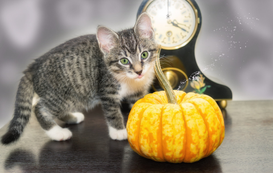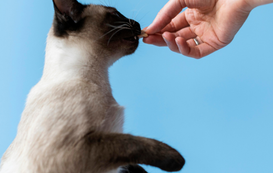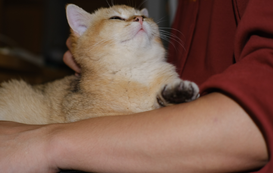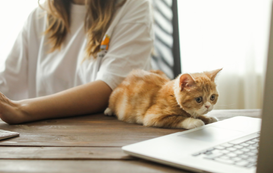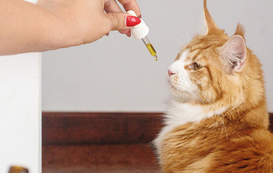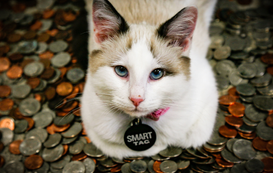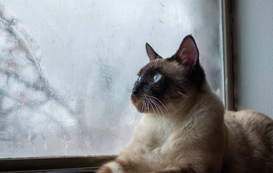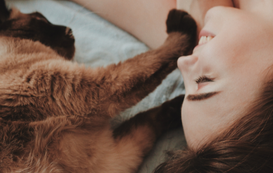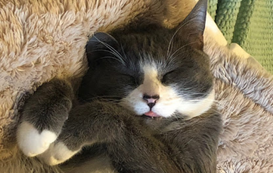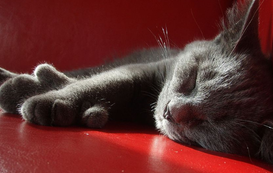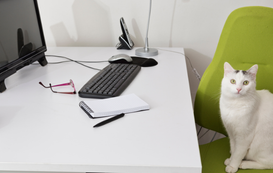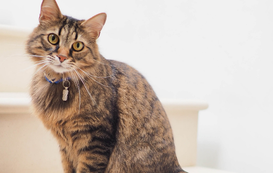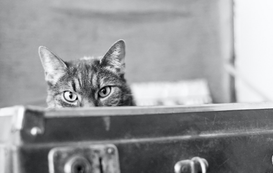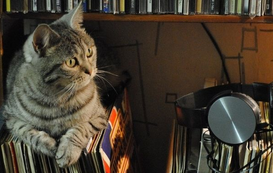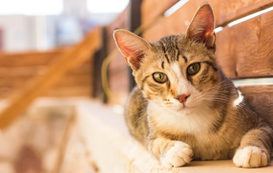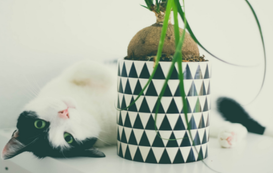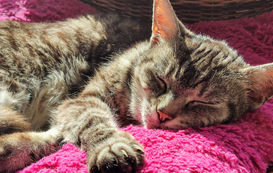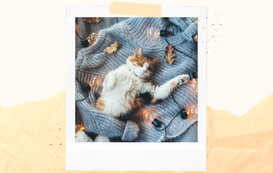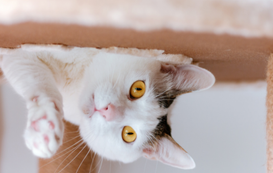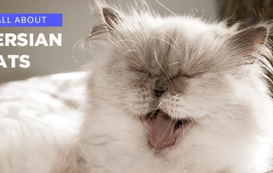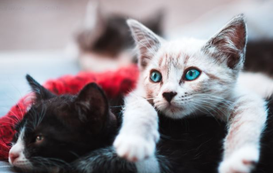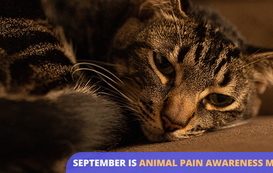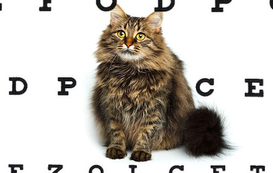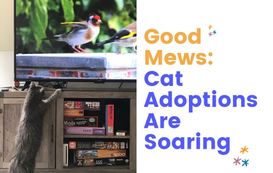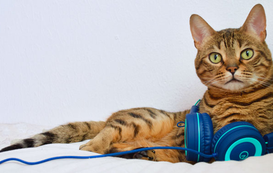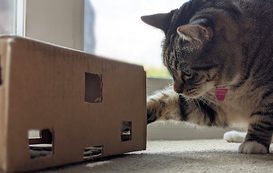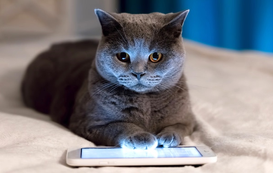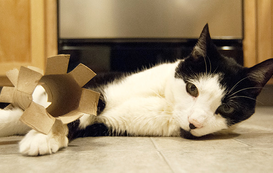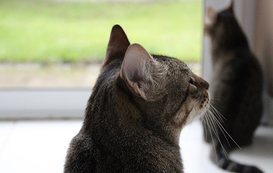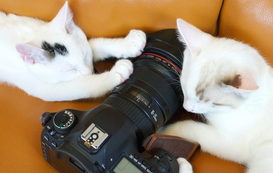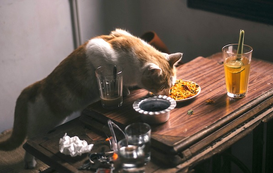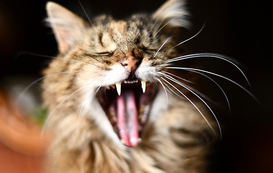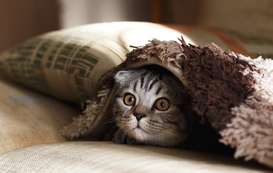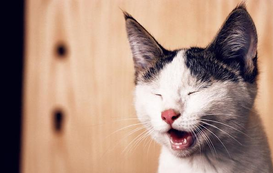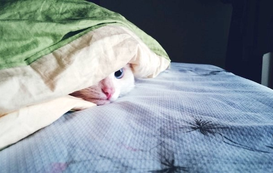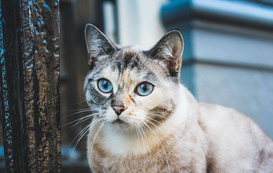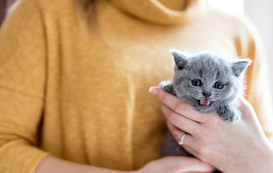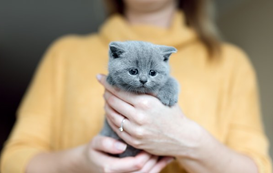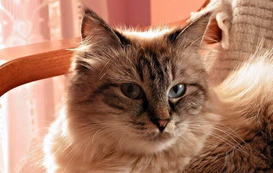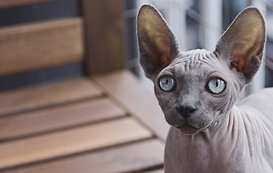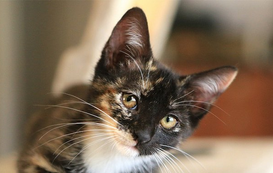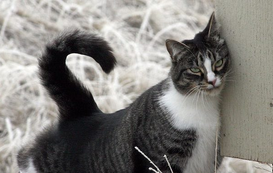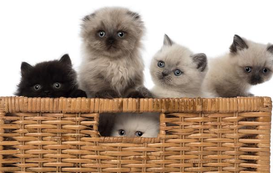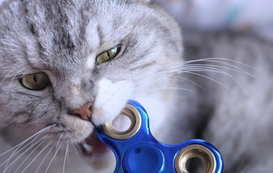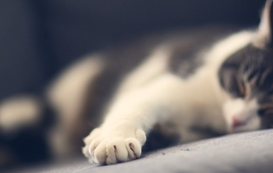- Home
- Cat Sitter Blog
- Cat Nutrition
- Food for Thought: How to Properly Switch your Cat's Diet
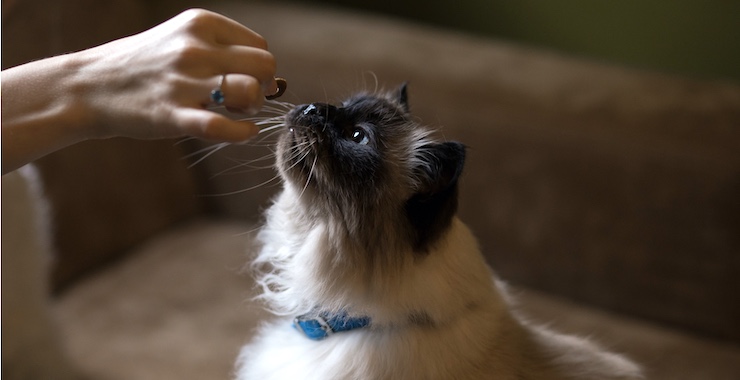

Food for Thought: How to Properly Switch your Cat's Diet
This post contains affiliate links and Meowtel will be compensated if you make a purchase after clicking on the links.
There are a multitude of reasons why you, as a cat parent, may decide to switch Peanut’s diet. Perhaps he has become picky. Maybe he’s had some icky poops. Or perhaps, you’ve decided his current food isn’t as healthy as you’d like it to be. Everyone has an opinion about what kind of protein, brand, or type of cat food is best. But one thing all vets, pet food companies, and bloggers can agree on is that a transition period is necessary when switching your cat’s food.
When changing Peanut’s diet, you need to have a slow integration of the new food. Why? Because if you change over too quickly, Peanut could potentially have negative and harmful reactions. He could get sick (vomiting or diarrhea) or he could refuse the new food all together. Unfortunately, the thought process of “if he’s hungry, he will eat” doesn’t really work with cats as it could lead to health issues. Dr. Lorie Huston of PetMD says,
Never try to starve your cat into eating a new diet. Cats that do not eat regularly can develop hepatic lipidosis, a health condition that can become life-threatening. If your cat goes longer than 24 hours without ingesting any food, you should be concerned. Cats that are eating an insufficient amount of food may take longer to become ill but can still develop hepatic lipidosis within a few days. 1
Depending on your cat’s temperament and overall health, you should conduct the changeover over 7-14 days. For sake of ease, the breakdown below demonstrates this change with a 7-day plan:
- Days 1-3: 75% old food / 25% new food
- Days 4-5: 50% old food / 25% new food
- Days 6-7: 25% old food / 75% new food
- Days 8+: 100% new food
If you feel that your cat would benefit from a slower changeover, you can draw it out over 10-14 days. To do this, start day 1 on 90% old/10% new and alter the percentages by 10 rather than 25. Barbara Alvarez of Huffington Post makes an important point, “Any time you see signs of illness that may be connected to the new food, take [him] back to the earlier days of your food introduction schedule. His system may be more sensitive than other cats, meaning he needs a longer time to get used to the new nosh.” 2
You know your cat best; so as long as you transition food slowly over the course of at least 7 days, you should be ok. Of course, always check with your vet if you have any questions on how you should specifically switch Peanut’s diet.
If you’re switching your cat from an all kibble diet to an all wet food diet, it’s important to note that the process may be more difficult than switching to one wet food from another wet food. This is because the textures and smells are completely different. Dr. Huston recommends trying the following tricks to help Peanut transition easier:
There are some tricks you can try to make the transition easier and the food more palatable. Try sprinkling the kibbles on top of the wet food until your cat is used to the smell of the wet food underneath. Then you can try mixing the dry food into the wet food. You can also try grinding some of the dry food into a powder and mixing it into the wet food to add flavor and make the food more palatable. 1
If none of those tricks work, do what one of my clients does for her cat. Warm up the wet food in the microwave to make the scent stronger. This should only take a few seconds. Stir the food well as sometimes it can heat unevenly and may cause burns. Test the temperature of the food as you would baby formula to make sure it is not too hot to serve. My client also sprinkles the probiotic Fortiflora on top of the wet food to entice her cat to eat. This is a great trick that also provides an extra probiotic boost for kitties with sensitive digestion.
While switching Peanut’s diet may seem overwhelming, these tricks and tips should help guide you through the process. If you’re in the middle of the switchover as you leave for a trip, be sure to let your Meowtel sitter know where you are in the transition so they can be sure to keep Peanut on the track to success!
- Huston, Dr. Lorie. (2013). Retrieved from https://www.petmd.com/blogs/thedailyvet/lhuston/2013/aug/how-to-transition-your-cat-to-new-food-30701
- Alvarez, Barbara. A Sudden Dietary Change Can Cause Illness in Your Cat. (2016). Retrieved from https://www.huffpost.com/entry/a-sudden-dietary-change-c_b_9033286
Photo by freestocks.org via Pexels





